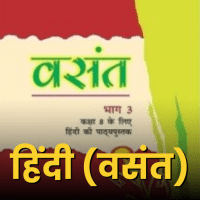Class 8 Exam > Class 8 Questions > Recycled plastics can be produced from?
Start Learning for Free
Recycled plastics can be produced from?
Most Upvoted Answer
Recycled plastics can be produced from?
Recycled Plastics Production Process
Recycled plastics are produced through a series of steps that involve collecting, sorting, cleaning, shredding, melting, and shaping the plastic waste. Let's explore each step in detail:
1. Collection
The first step in the production of recycled plastics is the collection of plastic waste. This waste can come from various sources such as households, businesses, or recycling centers. It is important to separate different types of plastic at this stage to ensure efficient recycling.
2. Sorting
Once the plastic waste is collected, it needs to be sorted based on the type of plastic. Different types of plastics have different chemical compositions and properties, making it necessary to separate them. This is typically done by hand or using automated sorting systems that identify and separate plastics based on their resin codes.
3. Cleaning
After sorting, the plastic waste goes through a cleaning process to remove any contaminants such as dirt, labels, or adhesives. This can involve washing the plastic with water and detergent or using specialized cleaning techniques.
4. Shredding
The cleaned plastic waste is then shredded into small pieces. This increases the surface area of the plastic, making it easier to melt and shape in subsequent steps. Shredding can be done using industrial shredders or granulators.
5. Melting
The shredded plastic is melted down in a controlled environment. The temperature and duration of the melting process vary depending on the type of plastic being recycled. The melted plastic forms a molten mass that can be molded into different shapes.
6. Shaping
The molten plastic is then shaped into the desired form. This can be done through various methods such as injection molding, extrusion, or blow molding. Injection molding involves injecting the molten plastic into a mold, while extrusion pushes the plastic through a die to create a specific shape. Blow molding is used to create hollow objects such as bottles.
7. Cooling and Solidifying
Once the plastic has been shaped, it is cooled down to solidify and retain its new form. Cooling can be achieved through air or water cooling methods. The solidified plastic is then ready for use or further processing.
8. Quality Control
Throughout the production process, quality control measures are implemented to ensure the recycled plastics meet specific standards. This can involve checking for defects, conducting tests on the physical properties of the plastic, and verifying its composition.
9. Reuse or Recycling
The final step in the production of recycled plastics is determining whether they will be reused or recycled again in the future. Some recycled plastics may be used directly in the manufacturing of new products, while others may undergo further recycling processes to create different types of plastics or plastic products.
Overall, the production of recycled plastics involves a combination of collection, sorting, cleaning, shredding, melting, shaping, cooling, and quality control steps. This process helps reduce plastic waste and promotes a more sustainable approach to plastic production and consumption.

|
Explore Courses for Class 8 exam
|

|
Question Description
Recycled plastics can be produced from? for Class 8 2025 is part of Class 8 preparation. The Question and answers have been prepared according to the Class 8 exam syllabus. Information about Recycled plastics can be produced from? covers all topics & solutions for Class 8 2025 Exam. Find important definitions, questions, meanings, examples, exercises and tests below for Recycled plastics can be produced from?.
Recycled plastics can be produced from? for Class 8 2025 is part of Class 8 preparation. The Question and answers have been prepared according to the Class 8 exam syllabus. Information about Recycled plastics can be produced from? covers all topics & solutions for Class 8 2025 Exam. Find important definitions, questions, meanings, examples, exercises and tests below for Recycled plastics can be produced from?.
Solutions for Recycled plastics can be produced from? in English & in Hindi are available as part of our courses for Class 8.
Download more important topics, notes, lectures and mock test series for Class 8 Exam by signing up for free.
Here you can find the meaning of Recycled plastics can be produced from? defined & explained in the simplest way possible. Besides giving the explanation of
Recycled plastics can be produced from?, a detailed solution for Recycled plastics can be produced from? has been provided alongside types of Recycled plastics can be produced from? theory, EduRev gives you an
ample number of questions to practice Recycled plastics can be produced from? tests, examples and also practice Class 8 tests.

|
Explore Courses for Class 8 exam
|

|
Signup for Free!
Signup to see your scores go up within 7 days! Learn & Practice with 1000+ FREE Notes, Videos & Tests.


















